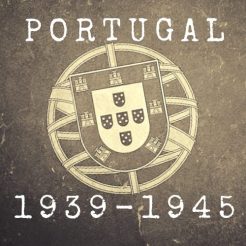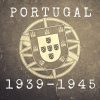África Ocidental
(Portugal)
Captain:
Type: Motor Merchant
Tonnage: 1265
Owner: Sociedade Geral de Comércio, Indústria e Transportes
Homeport: Lisbon
Built: Portugal, 1938
Event: Found 12 crew members from the "Horn Shell" on 06 August 1941.
Maria Leonor
(Portugal)
Captain:
Type: Fishing steamer
Tonnage:
Owner: Companhia Portuguesa de Pesca
Homeport: Lisbon
Built:
Event: Found 14 survivors of the "Horn Shell" on 14 August 1941.
The steamer "África Ocidental" found a lifeboat on August 6, 1941, 220 miles southeast of the Canary Islands, with 12 men belonging to the garrison of the British steamer "Hornshell", sunk on 26 July by the Italian submarine “Barbarigo”. The twelve men, commanded by the 2nd Mate, were left on the 9th in the Island of Sao Vicente, in Cape Verde. On the 23rd of the same month they were shipped in the Portuguese passenger steamer “Serpa Pinto” bound for Lisbon.
Another lifeboat from the same ship, with 14 survivors, was picked up by the fishing trawler Maria Leonor on the 14th. Information from British sources documents the presence of the shipwrecked on board of the ship on August 17 off Cape Juby, Marocco. A communication sent by the Portuguese fishers warned about the presence of a wounded man and also that they lacked provisions to feed all of them. They also did not wanted to go to the French ports of Africa because they knew that the shipwrecked would be interned. The British sent the destroyer “Avon Vale” to collect the shipwrecked and, if possible, provide some supplies to the Portuguese trawler.
On 20 August the exchange had already taken place and there was also information that one of the men, the radio officer T. A. Walker had died, while still in the lifeboat. “Avon Vale” left the survivors in Sierra Leone.
A third lifeboat with 15 castaways, including the commander, was found on the 8th August by the Brazilian ship "Cuyaba". The steamer was in route from Lisbon to Pernambuco where it arrived at the 18th.
A fourth boat with 14 men was never found.
The Sinking Horn Shell
The Horn Shell was a tanker who left the port of Gibraltar for Curacao on July 22, 1941, with the escort of a patrol that accompanied him during the first two days, at which point he continued independently.
On July 26, at 11:30 p.m. (GMT), the ship was struck by a torpedo that crashed the engine room, which was flooded stopping the vessel immediately. Captain MacDougall was fast in giving the orders to prepare the lifeboats and put on lifejackets.
Knowing although that the ship could not sink, because at this point it has only been struck by one torpedo, MacDougall ordered the lifeboats to stay in the vicinity hoping that - if there was no more attacks - it would be possible to return. The ship was hit by a new torpedo a little bit latter, at which point the captain and a few other men who had returned to send distress messages, abandoned the tanker that received the impact of two more torpedoes in the following minutes. The Horn Shell adorned and sank.
All the crew had been able to leave the ship and as the sea was good it was possible to divide them in groups of 14. Only the boat with the captain had 15. Since they were about 300 miles from Madeira, it was decided to try to reach the island, but none of them would arrive there.
Horn Shell
(GB)
Captain: A. MacDougall
Type: Tancker
Tonnage: 11692
Owner: Anglo Saxon/ Shell Tankers UK
Homeport: London
Built: Germany/ Alemanha, 1931
Fate: Sunk by the Italian submarine Barbarigo on 26 July 1941. 17 dead, 40 survivors.
Resources:
- Archives: National Archives UK, Kew (GB); Arquivo Histórico do MNE (PT); Nara - National Archives and Records Administration (USA);
- Sites: https://www.helderline.com ;
- Books & Publications: Shipping Company Losses of the second World War, Ian M. Malcolm; Navios da Marinha Portuguesa, datas 1939 a 1945;

